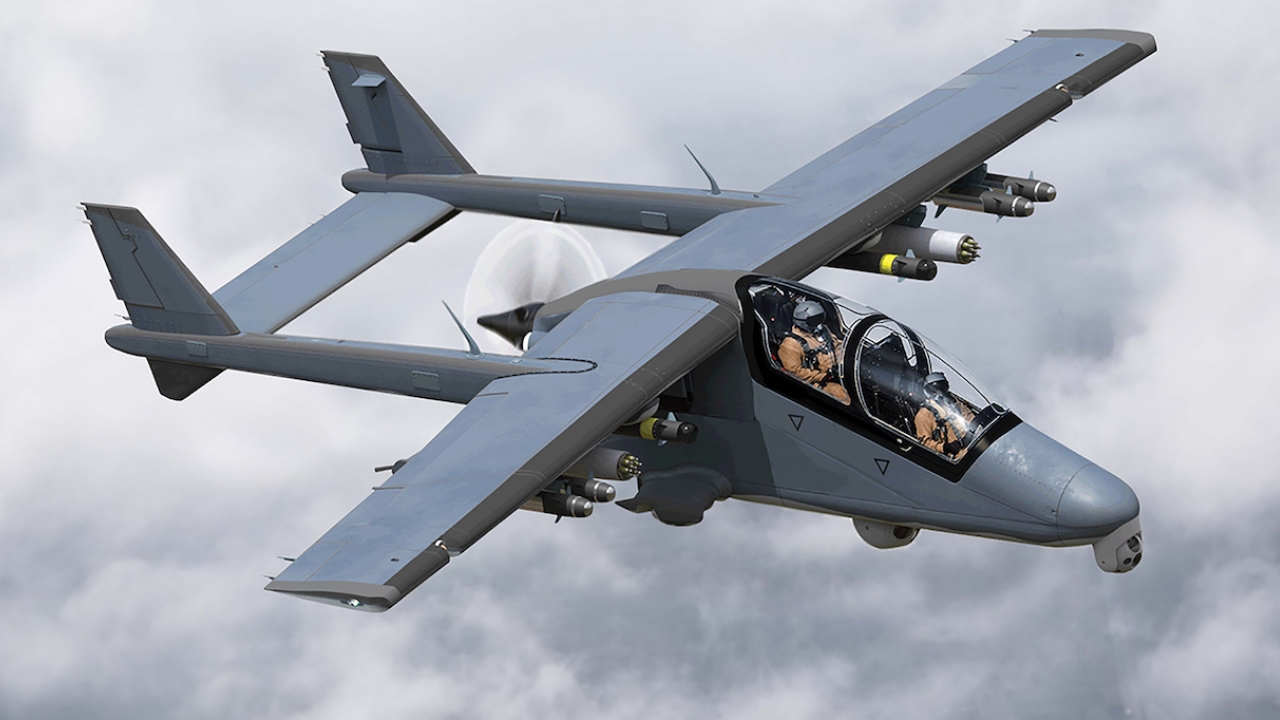Togo modernises in slow motion
The rapid degradation of the security panorama in neighbouring Burkina Faso has served as a catalyst for a limited aircraft procurement effort by Togo. But air force modernisation can be a slow, and often uphill, journey.

The Togo Air Force has faced significant challenges in recent years after an eventful history.
Launched on February 1, 1964, the official debut of military aviation in independent Togo saw the creation of an air section within the Togolese Armed Forces general staff.
Four Max Holste MH-1521 Broussard utility aircraft were delivered to Togo by France, as its initial complement, which was later supplemented by two Douglas C-47 transports, two Cessna 337s and a pair or Dornier 27s.
On July 1, 1973, the Togolese National Flight (ENT) was created, with the air section being disbanded. The ENT was tasked with operating all Togo’s military aircraft. This restructuring heralded the beginning of a major expansion in capabilities, culminating in the procurement of Lomé’s first jets.
On December 1, 1980, the ENT was disbanded and superseded by the new Togolese Air Group (GAT). The change was intended to reflect the expansion of the air arm, which purchased five Dassault Dornier Alpha Jet Es, delivered in 1981.
The infrastructure also grew, with the building of a new air base at Niamtougou, in northern Togo, where all fighter operations were concentrated, while Lomé was retained as the main location for transport assets.
In 1985, an Alpha Jet was lost in a crash, with a second being destroyed in 1989. These were replaced with new aircraft purchased from France.
Four Socata TB-30 Epsilons were received in 1985, while other types inducted during the 1980s and early 1990s included a pair of Beech Baron 58s, a Dassault Falcon 10, two Beechcraft King Air 200s, and an AS332 Super Puma for VIP transport duties.
In 1997, the GAT was reorganised as the Togolese Air Force, becoming a full blown service alongside the army and navy.
A year later, a pair of SE3160 Alouette IIIs were obtained second-hand.
However, from the late 1990s, the air force underwent a gradual decay, with several aircraft being grounded and stored as they came up for servicing.
By the late 2000s, the Embraer EMB326GC Xavantes (six had been delivered between 1976 and 1978) were no longer flying, and only a couple of Alpha Jets were still operational. These stopped in the early 2010s and have since been kept in a hangar at Niamtougou.
In 2010, three of the TB-30s were refurbished in France, but one was lost in 2017.
In 2013, the purchase of a former Botswana Defence Force CN235-10 was abandoned, leaving a single DHC-5 as the air force’s sole tactical transport aircraft. It was subsequently taken out of service.
Most helicopters were also progressively grounded, although Lomé did procure a used Mi-8T in 2013. It had a short-lived career – high operating and maintenance costs forcing its early withdrawal.
With the current deteriorating security situation in the region, Togo realised it needed to rebuild its offensive capability.
Consequently, it signed a contract with French company, SECAMIC, in 2016, for the purchase of four modernised SA342L1 Gazelles, although delays in securing the export license from the French Government postponed its implementation until early 2018.
The deal covered four Gazelles, armed with 20mm canons and fitted with a stabilised L3Harris Wescam electro-optic and infrared (EO/IR) sensor, with a laser designator, as well as three years of support.
A modernisation of the aircraft’s cockpit, adding a Garmin GPS, was also included. SECAMIC procured former French Army Aviation helicopters in 2017, initially planning to complete deliveries to Togo by September 2019. However, only two Gazelles were handed over in October 2019, with work continuing on the remaining two.
The two SA342s were provided without their EO/IR sensor and with second-hand Nexter M621 canons, instead of the contracted brand-new examples. Delivery of the remaining aircraft is now expected by June this year, with integration of the EO/IR sensors to be conducted in Togo.
This situation is reportedly not to the Togolese authorities’ liking and they are concerned that delivery could be further delayed and that the sensor integration will lack the certification from the French Directorate General for Armament (DGA), as was originally intended.
The future of the contract, of which Lomé has already paid 80%, is now uncertain, with the Togolese authorities reportedly considering cancelling it and requesting full reimbursement.
In addition to the SA342 purchase, Togo has also procured two second-hand Mi-17-1Vs, likely from the Ukraine, both aircraft having been delivered in 2019.
The two Mi-17s now in service give the Togolese Air Force the needed air mobility to rapidly deploy troops and equipment throughout the country.
If the SA342s do get delivered, they will provide Lomé with a fairly capable patrol and light-attack platform, which can be used to further secure its northern border.
Stay up to date
Subscribe to the free Times Aerospace newsletter and receive the latest content every week. We'll never share your email address.

